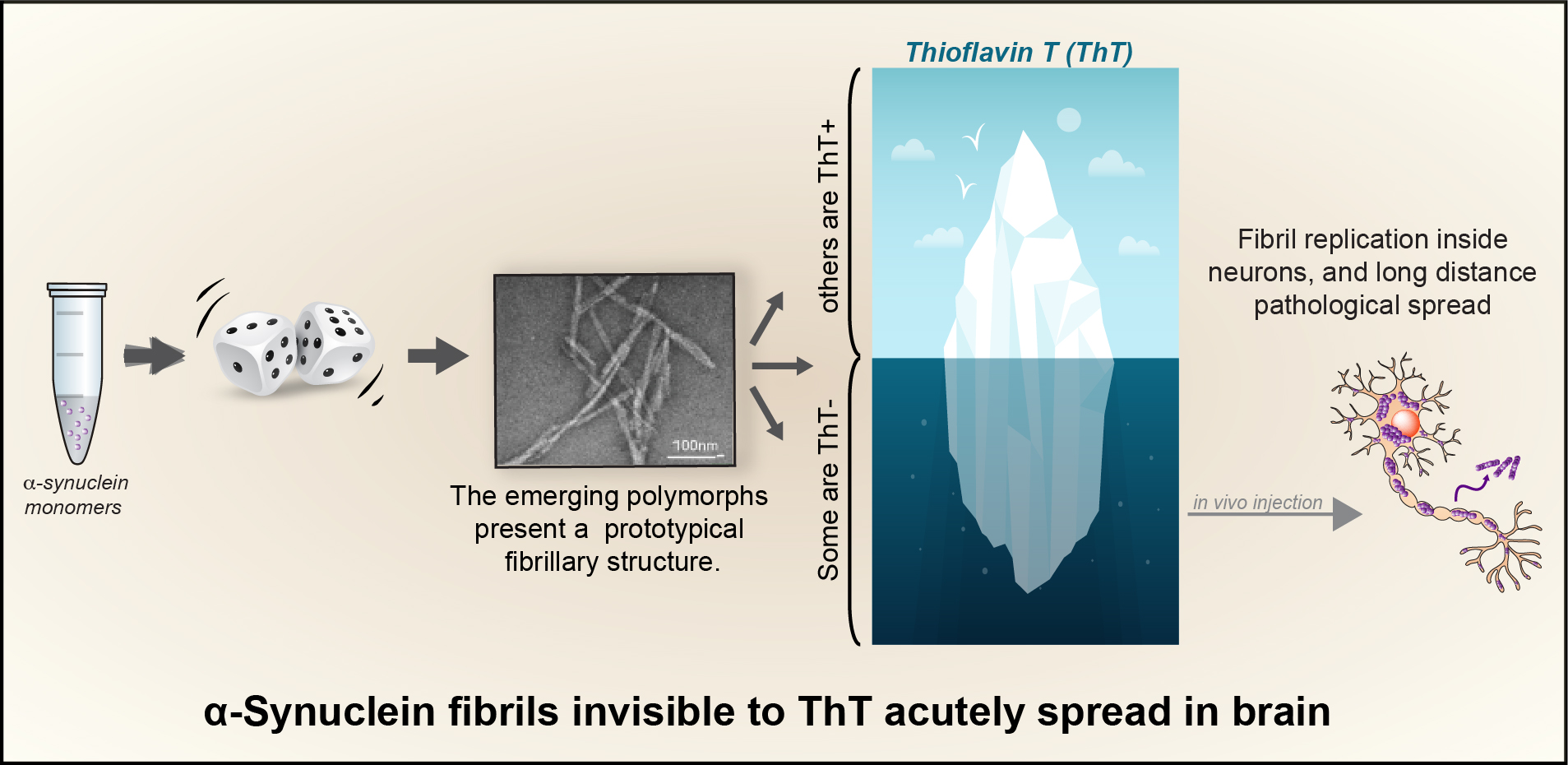News Archive
RESEARCH HIGHLIGHT – When stealth α-synuclein fibrils take over
The protein, alpha-synuclein (α-syn), is involved in the regulation of neurotransmission, and its dysfunction is associated with several neurodegenerative diseases, including Parkinson’s disease (PD), dementia with Lewy bodies, and multiple system atrophy (MSA). α-syn is a particularly flexible protein that oscillates between different conformations. But in neurodegenerative synucleinopathies, α-syn ceases oscillating, and get stuck in a particular conformation that automatically piles up and forms fibrillar amyloid aggregates. It is now well accepted that this process is self-sustained since an initial aggregate works as a seed recruiting more monomers into an ever-growing pathological stack that eventually breaks into fragments and disseminates. Similar to prions, this process leads to the spread of the pathology across the brain.
Structural biology approaches have recently shown that several fibril types (called polymorphs) each endowed with a distinctive fold can be experimentally produced in vitro using each time a specific medium. Whether the distinctive properties of these different experimental polymorphs could be responsible for the different clinical presentations of synucleinopathies is still matter of intense research.
In this study published in Sciences Advances, the UBx team discovered that during fibril formation in a physiological salt solution, α-syn can actually randomly adopt several amyloid folds, but several of the fibril polymorphs that emerge, were, up to now, left unnoticed.
The authors of the study actually made an unexpected discovery: the specific fluorescent dye thioflavin T (ThT), routinely used all over in the labs to monitor α-syn fibrillization, could not detect all of the emerging polymorphs, some of these remaining unseen with this classical and historical tool. They demonstrated that (1) these new α-syn polymorphs show an acute propensity towards self-replication in cultured neurons, and (2) injection in living mice, into the substantia nigra, triggers a synucleinopathy that spreads over long distances towards various anterior brain structures. These “stealth” ThT-invisible polymorphs have no match with any of the polymorph structure families previously characterised, indicating that previously unnoticed polymorphs can silently proliferate, crowd the fibrillar population and be a cause for exacerbated α-syn spread.
This discovery is of particular importance for the research on synucleinopathies: since the primary monitoring of α-syn fibril formation with ThT is a consensus reference method, this has led to ignoring Tht negative polymorphs and focused most research efforts only on the tip of the iceberg, i.e., the sole Tht-positive fibrils.
The authors thus developed a new multiplex assay to rapidly identify both the ThT positive and negative polymorphs, they named it: “Fibrilloscope”. This assay could become an essential tool, especially to avoid mistaking the emergence of ThT negative polymorphs for fibrillization inhibitions when seeking drug candidates to prevent α-syn aggregation.

This project receives funding from the Innovative Medicines Initiative 2 Joint Undertaking (www.imi.europa.eu) under grant agreement No 116060. This Joint Undertaking receives support from the European Union’s Horizon 2020 research and innovation programme and EFPIA.
This work is supported by the Swiss State Secretariat for Education‚ Research and Innovation (SERI) under contract number 17.00038.
The opinions expressed and arguments employed herein do not necessarily reflect the official views of these funding bodies.



